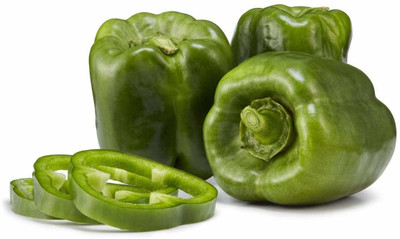CRGO CAPSICUM , SHIMLA MIRCH Seed(60 per packet)
Quick Overview
Product Price Comparison
Capsicum, also known as Bell Pepper or even Simla Mirch, is a vegetable belonging to the Nightshade family of plants that also includes tomatoes, potatoes, and brinjals. Red capsicum or bell pepper is basically the completely ripened and mature form of green capsicum. They are the sweetest of all bell peppers and have a mild and a fruity-tangy taste. An excellent source of antioxidants specially carotenoids, red bell peppers have twice the amount of Vitamin C than the green capsicum.. This quality helps with giving a solid boost to the immune system while preventing the risk of Type 2 diabetes and cadiovascular diseases.Also rich in Vitamin E, Vitamin B, minerals like manganese, and other anti-inflammatory nutrients they possess potential anti-cancer benefits. Those looking to manage weight should include this in their diet without second thoughts.PLANTING INSTRUCTIONSStart planting seeds indoors 8-10 weeks before the end of spring and before it starts to get warm. Keep the seeds warm for germination.Sow three capsicum seeds in a pot, and thin out the weakest seedling after the seeds have sprouted. Let the remaining two seeds grow as one plant so that the peppers remain protected from excessive sunlight.A week before transplanting, introduce fertilizer or aged compost in your garden soil.Transplant seedlings outdoors when frost is no longer a threat. Sow them 18 to 24 inches apart (but keep paired plants in close proximity.)Put two or three match sticks in the hollow with each plant, along with almost a teaspoon of fertilizer. The match sticks provide sulfur to the plants.GROWING REQUIREMENTSWATERINGWater one to two inches per week, but remember peppers are extremely heat sensitive.PESTSMost peppers are susceptible to the below mentioned pests. Symptoms include marginal foliar burning, yellowing and browning of leaves, browning of roots and no growth or the development of black sooty mould, which can occur on the undersides of leaves. Aphids Flea Beetles Cucumber Mosaic Virus Blossom-End Rot appears as a soft, sunken area which turns darker in color.PESTSMost peppers are susceptible to the below mentioned pests. Symptoms include marginal foliar burning, yellowing, and browning of leaves, browning of roots and no growth or the development of black sooty mould, which can occur on the undersides of leaves. Pests such as the following are a real threat. Pests affecting red capsicum are Aphids, Flea Beetles, Cucumber Mosaic Virus.SOILPeppers grow best in loamy soil with a pH between 6.2 and 7.0, although they can tolerate slightly alkaline conditions near 7.7SPOTCapsicum grow well in the sun, so find a sunny spot to plant capsicum.TEMPERATURESoil should be at least 18 degree C (65 degrees F), peppers will not survive transplanting at temps any colder.TEMPERATURESoil should be at least 18 degree C (65 degrees F), peppers will not survive transplanting at temperatures lower than this.WATERINGWater one to two inches per week, but remember peppers are extremely heat sensitive.HOW TO HARVESTHarvest as soon as peppers reach their full sizeThe longer bell peppers stay on the plant, the sweeter they get and the greater is their Vitamin C content.Use a sharp knife or scissors to cut peppers.Peppers can be refrigerated in plastic bags for up to 10 days after harvesting.Wash, core out, and seed the peppers. Cut into one-half-inch strips. Steam for around ten minutes, then scatter on a baking sheet. Dry in the oven at 60 C [140 degrees F] (or the lowest possible temperature) until brittle, stirring once in a while and switching tray positions.When the peppers are cool, place them in bags or storage containers.


